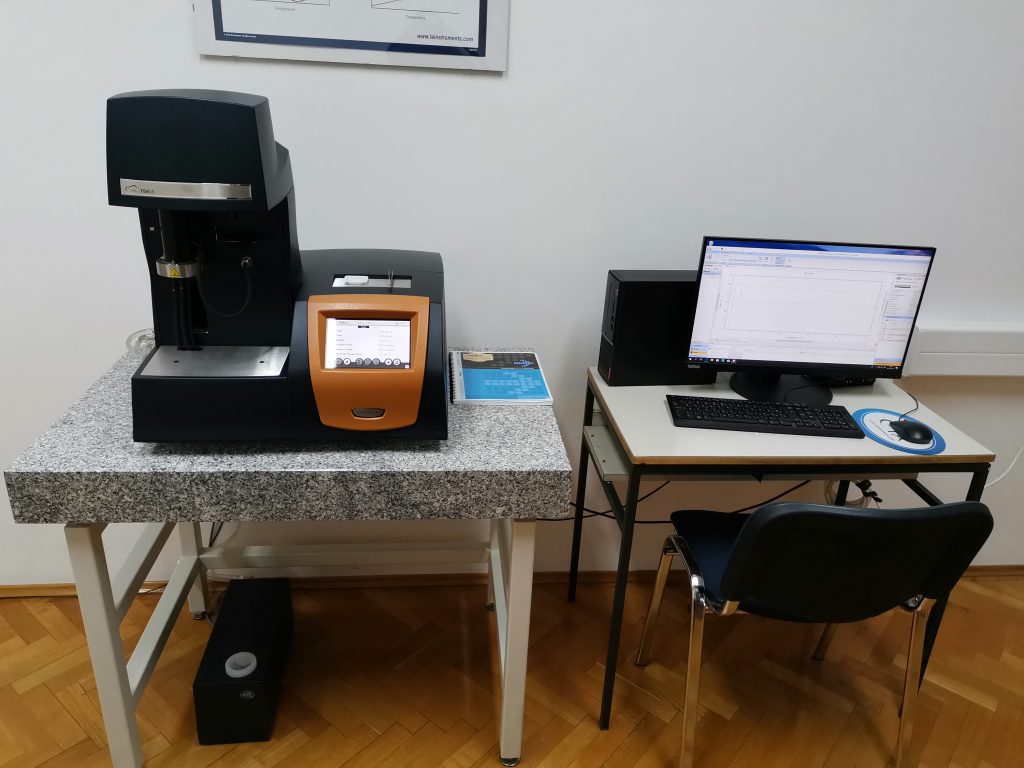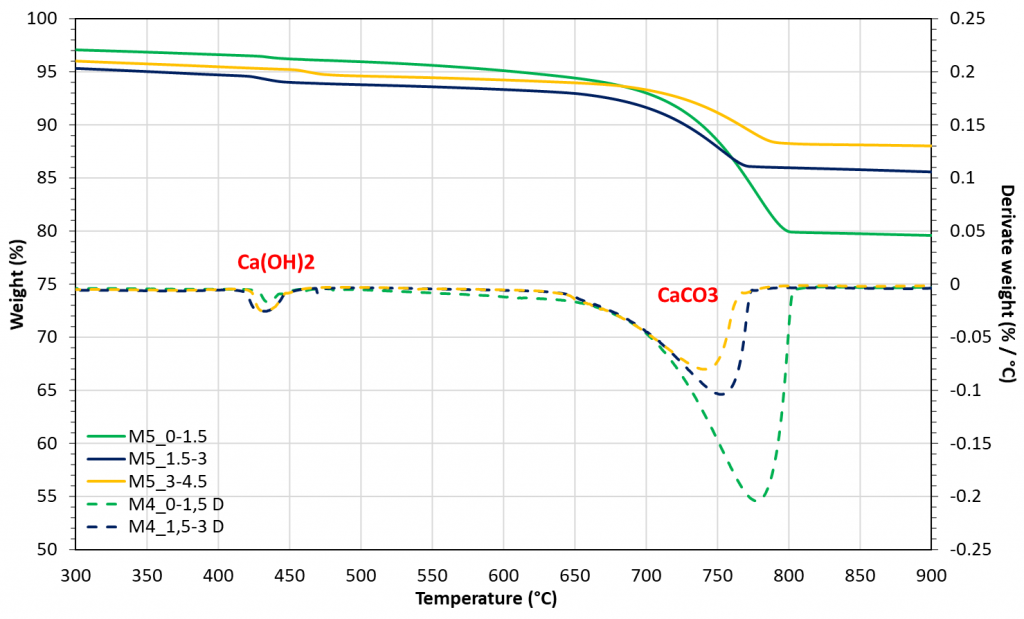Thermogravimetric analysis (TGA) is an analytical technique used to determine a material’s thermal stability and its fraction of volatile components by monitoring the weight change that occurs as a sample is heated at a constant rate.
In the field of cement science thermogravimetry (TG) is a widely used to identify and quantify specific mineralogical phases of hydrated cementitious materials. Thermogravimetric analysis (TGA) measures H2O, OH–, CO2, SO42- released during the heating of sample under N2 environment.

Example of use: Analysis of concrete carbonation at different depth in Zagreb Arena. The figure shows the weight changes (%) and its derivate vs. temperature (°C) for a concrete powder taken from three different depths of concrete element. The peak of CaCO3 in the first 1.5 cm is bigger than the deeper layers, indicating a higher stage of carbonation, confirmed by a progressive increase of Ca(OH)2 peak in the depth.
